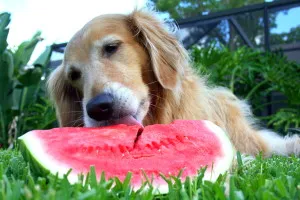Golden Retrievers are beloved for their friendly nature and active lifestyles, but their dietary needs require careful attention. Choosing the best food for Golden Retriever health can prevent common issues like skin problems, weight gain, and heart conditions. High-quality nutrition supports their immune system, shiny coat, and overall vitality without breaking the bank. Cheaper grocery store brands often lack essential nutrients and demand larger portions, leading to higher costs over time. Premium options, typically around two cups daily adjusted for activity, deliver better value and results.
For tailored recommendations, check out our guide on the best food for golden retriever.
Why Golden Retrievers Need Specialized Nutrition
Goldens are prone to allergies, skin irritations, and taurine deficiencies, especially from poor diets. A subpar food can trigger hot spots, excessive itching, and veterinary bills. Always shop at pet stores for superior formulas—grocery brands fall short on balanced nutrition. Vet office foods aren’t automatically ideal; scrutinize ingredient lists yourself. Fancy ads often mislead; grain-free hype, for instance, links to dilated cardiomyopathy (DCM) in breeds like Goldens due to taurine issues.
Veterinarians emphasize reading labels over marketing claims. According to rescue organizations like Golden Retriever Rescue, consistent quality feeding extends lifespan and mobility.
Key Guidelines for Selecting the Best Food
Follow these expert-backed tips to ensure your Golden gets optimal nutrition:
Prioritize chemical-free preservatives. Skip Ethoxyquin, BHA, BHT, propylene glycol, or sodium nitrate/nitrite, which may pose cancer risks. Opt for natural options like tocopherols (Vitamins C and E), rosemary, and herbs.
Check freshness dates. Buy bags with months until expiration from high-turnover stores. Avoid greasy or moldy packaging. Store in airtight containers in cool, dry spots. Smaller 10-15 lb bags suit single-dog homes for peak freshness.
 Golden Retriever enjoying a bowl of premium kibble
Golden Retriever enjoying a bowl of premium kibble
- Demand meat-first ingredients. First ingredient should be real meat like chicken, lamb, or turkey. Seek multiple proteins (e.g., lamb, chicken, fish) in the top seven for balanced amino acids, unless allergies apply. Grain as the lead signals low quality—dogs thrive on animal proteins.
Explore top breed dog food options designed for active breeds like Goldens.
Reject animal digests and by-products. Digests include intestinal contents; by-products feature beaks, feet, feathers, and waste—not prime nutrition. Demand human-grade meats, free from diseased animals, tumors, or rendering plant rejects.
Eliminate sugars, colors, flavors, and excess salt. Semi-moist foods pack artificial additives. Post-bake vitamin coatings preserve nutrients—consider vet-approved supplements if needed.
Evaluate grains wisely. Brown rice, barley, or oats are fine in moderation, but avoid corn, soy, wheat (common Golden allergens), or “grain fractions” like brewers rice. Whole grains outperform processed sweeps.
Grain-free isn’t always superior; peas, potatoes, and legumes replacing grains can hinder taurine absorption, risking DCM and heart failure per FDA studies.
For automated portion control, a reliable dog feeder prevents overeating.
Navigating Grain-Free and Treat Choices
Grain-free kibble uses potatoes, peas, or tapioca, often matching or exceeding carb levels of grain-based foods. Research from the Whole Dog Journal highlights taurine risks in these formulas for large breeds.
Treats demand scrutiny too—many hide sugars and preservatives. Bake homemade biscuits or source bakery-fresh ones. High-end dog food brands offer safe alternatives aligned with daily kibble.
 Golden Retriever savoring a fresh watermelon treat
Golden Retriever savoring a fresh watermelon treat
Weight Management for Long-Term Health
Overweight Goldens face hip dysplasia, reduced mobility, and shortened lifespans. Ideal adults eat 1 cup premium kibble twice daily—feel ribs, see a waist. Cut kibble by 1/3, mix in no-salt green beans or pumpkin. Avoid filler-heavy “diet” foods.
Rescue experiences show Goldens arriving 30-40 lbs overweight; maintaining lean builds prevents this. Free-feeding encourages obesity—measure meals instead.
Final Thoughts on Golden Retriever Feeding
Selecting the best food for Golden Retriever boils down to ingredient scrutiny, vet input, and reliable sources. Prioritize meat-rich, preservative-free formulas to dodge allergies, deficiencies, and excess weight. Your Golden deserves nutrition fueling a vibrant, cancer-free life.
Consult your veterinarian for personalized plans, especially with health issues. Share your feeding successes in the comments and explore more tips like places that sell dog ice cream near me.
References
- Golden Retriever Rescue of Mid-Florida: Feeding Guidelines
- Whole Dog Journal: Approved Dry Dog Food List
- Whole Dog Journal: Best Canned Dog Food Reviews
- FDA Reports on Grain-Free Diets and DCM in Dogs
